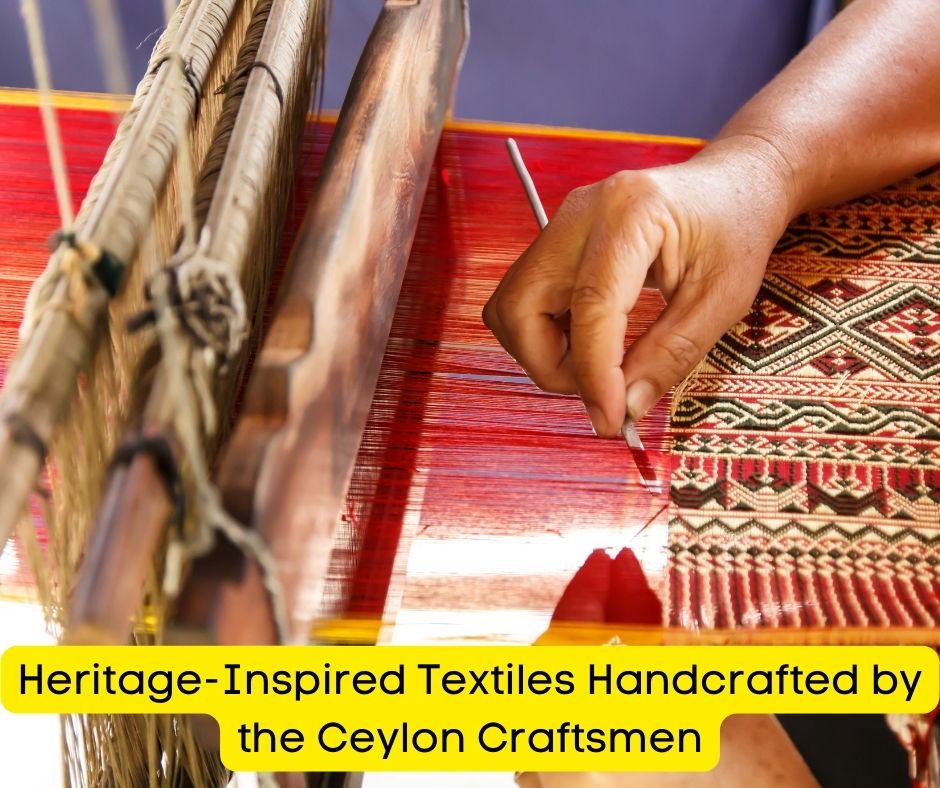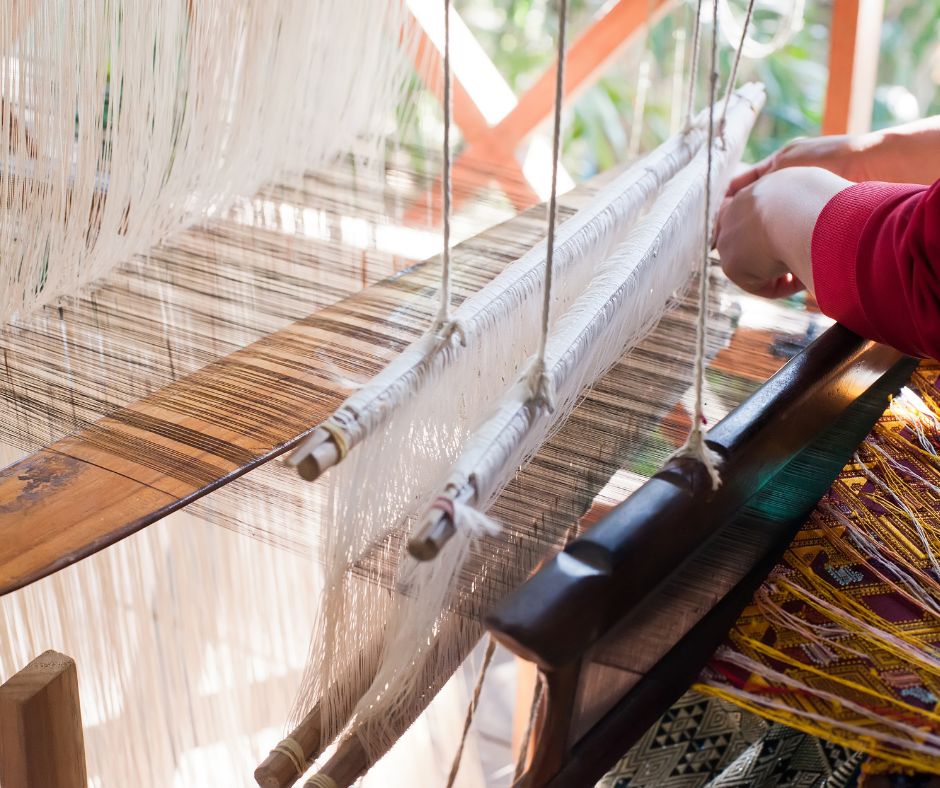
Table of Contents
Introduction to Handcrafted Textiles
Sri Lanka is well known as Ceylon for a long time among the international crowd for its fame for spices, textiles, gems, and tea products. Whether arriving or departing the country, every traveler that passes through the Bandaranaike International Airport is inundated with various colorful and one-of-a-kind objects of Sri Lanka’s rich cultural heritage. Among these objects, the place these visitors give to textiles like batik and hand-dyed clothing, handloom clothing is very high. Whether it is through legitimate handicraft shops or mass manufacturing establishments using traditional craft patterns and designs, these handicraft products represent the “Sri Lanka or Ceylon” that is being offered. Our culture is captured in our craft, which is how we communicate it.
Origin of handcrafted textiles in Ceylon
Creating handcrafted textiles was first a practical endeavor; people manufactured the things they required, such as clothing, kitchenware, mats, and other necessities. A factory line of people took the place of the lone artisan with the onset of industrialization. The Ceylon textile industry has expanded in recent years to include the creation of art and sculpture, traditional lacquer and sesath, batik, handloom clothing, masks and puppets, miscellaneous handicrafts, lace or leather items, and more as well as a multitude of heritage-inspired textile products. Some of the textile products can tell stories of the Ceylon Heritage.
Techniques used for textiles

The term “textile” refers to a wide range of fiber-based products, such as fibers, yarns, filaments, threads, and other fabric forms. The term “textiles” formerly only referred to woven cloth. However, weaving is not the sole method of production; other interesting techniques were eventually created to produce textile structures resulting in clothing and souvenirs. For some would be knitting, crocheting, bathik styling as techniques, followed by many more.
Role of the Sri Lankan government in textiles
Such is the era in which Sri Lanka finds itself in regard to crafts. Our postcolonial setting leaves us with crafts as an essential cultural and political signifier, as well as its significance for people from industrialized nations looking for the exotic overseas and a link between product and person. Sri Lanka is in a good position right now because of the strengthening legislative protections and increased interest in heritage around the world.
Importance of heritage inspired handcrafted textiles
The growth of the sector also holds the potential to give solutions to issues of national priority, such as the out-migration of workers, livelihood support, and tourism development. However, this sector needs to be thought about holistically and in tandem with other government policies. Also, the development of the sector aids to prosper the livelihood support for existent craftspeople and cultural heritage preservation. Which play an important role in sustaining these heritage-inspired textile handcrafts.
It is now obvious; that the Heritage-inspired hand-crafted textiles offer a wide array of authentic Sri Lankan souvenirs and novelty gift items which would be an ideal way to make one special while at the same time helps the craftsmen’s livelihood prosper and preserve the ancient heritage of Sri Lanka.
What makes Ceylon Craftsmen’s textiles unique?
Ceylon Craftsmen’s textiles are handcrafted using traditional techniques passed down through generations. They often feature heritage designs and weaving methods unique to Sri Lanka, offering a piece of cultural history in every piece.
What kind of textiles do they offer?
Ceylon Craftsmen offer a variety of textiles, including handwoven fabrics, tapestries, and sarongs. They might use materials like cotton, silk, or even natural dyes for a truly artisanal touch.
Are these textiles just for decoration, or can I use them for clothing?
Their fabrics can be used for both! Some textiles are perfect for creating unique clothing pieces or accessories, while others might be ideal for wall hangings or table runners.
How can I tell if Ceylon Craftsmen’s textiles are authentically handcrafted?
Look for information about their weaving techniques and materials used. They might mention traditional Sri Lankan weaving methods or natural dyes. Reputable retailers will often provide details about the artisans who create the textiles.
Are Ceylon Craftsmen’s textiles ethically sourced?
If ethical sourcing is important to you, inquire about the company’s practices. Look for certifications like Fair Trade that ensure fair wages and working conditions for the artisans.
How can I care for Ceylon Craftsmen’s textiles?
Care instructions will vary depending on the specific material. The company might offer recommendations on washing, drying, and storing their textiles to ensure they last for years to come.
Are Ceylon Craftsmen’s textiles expensive?
Handcrafted textiles often come at a premium compared to mass-produced items. However, you’re not just buying a product; you’re supporting traditional artisans and preserving cultural heritage.
Where can I buy Ceylon Craftsmen’s textiles in the US?
Ceylon Craftsmen might have an online store or partner with specific retailers in the US. Look for stores specializing in fair trade or handcrafted goods. Online marketplaces featuring international artisans might also be an option.
How can I incorporate Ceylon Craftsmen’s textiles into my home decor?
These textiles can add a touch of global flair to your space. Use them as throw pillows, wall hangings, table runners, or even reupholster furniture pieces for a unique conversation starter.
Do Ceylon Craftsmen offer custom pieces?
Some companies that work with traditional artisans might allow for customization. Inquire directly with Ceylon Craftsmen or the retailer to see if they offer custom designs or sizes for a truly unique piece.




